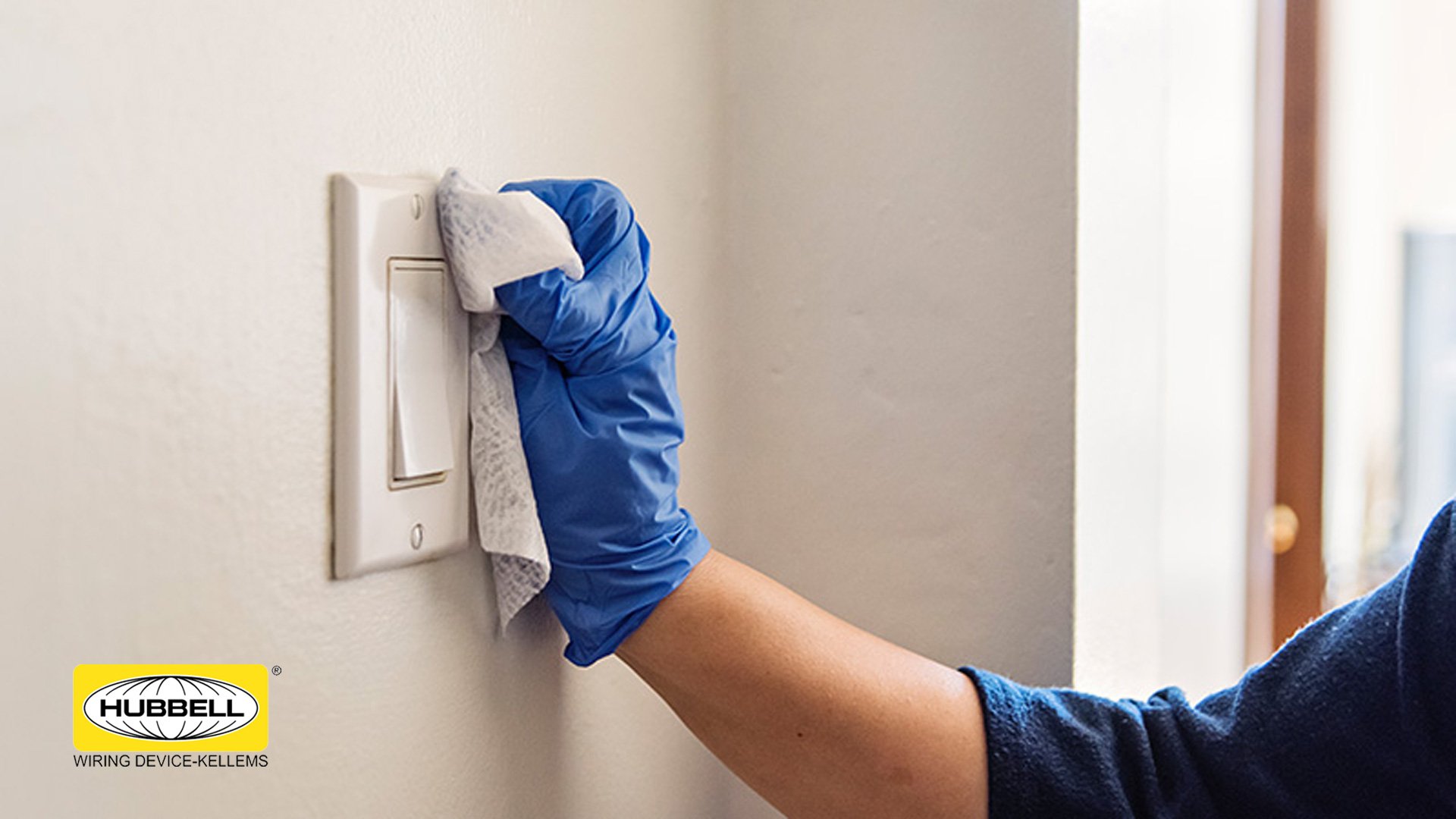We’re all familiar with the concept of touchless lighting controls—for years they’ve been part of the energy savings strategy for public and commercial buildings of all kinds, turning lights on when there is someone entering the space, and shutting them off after they leave. Perhaps most commonly associated with spaces such as public bathrooms, conference rooms, long hallways and similar areas with sporadic use and therefore sporadic lighting demand, they have traditionally been triggered by motion—or a certain amount of time going by with lack thereof.
Like so many other aspects of life, COVID-19 is making us rethink and giving us new perspective on the touchless lighting concept and its importance. Indeed, as we try to get offices and schools repopulated, there are many recurring themes as we create procedures to optimize safety for everyone—for example, wearing masks, keeping a few feet apart from colleagues at all times, avoiding touching your face, and avoiding touching objects as much as possible. Light switches, of course, are a constant source of concern—they are often the first thing that someone would touch entering a vacant room, and, especially if they have a dimmer, or a need to adjust lights for A/V or similar need, they could be touched dozens or hundreds of times a day.
In other words, while touchless lighting controls have always had an energy savings story, they, now, have an equally strong health and safety story as well, and even building operators who had been on the fence about the value of touchless lighting for energy savings alone are taking more and more notice of the possibilities these days.
Tipping point for touchless
Hubbell has noticed a great deal of renewed interest in touchless lighting options for health reasons, and, indeed, all kinds of emerging behaviors in “the new normal” are again and again pointing towards and reaffirming their value. For example, many buildings have lower traffic and lower populations than in the past—often by design—which makes the periods of vacancy—and the need for automatic shut off—even more acute. Further, the constant personal fear nearly all of us feel as we try to go about our day in public can be a quite serious health concern in and of itself. The value of building owners taking visible efforts to increase the health and safety of everyone in the building—helping to increase their comfort level and putting them at ease—should not be understated in this odd new world we are all living in.
As more and more building operators are looking to improve their spaces with touchless lighting solutions, many are pleased to learn about the ease of installation of Hubbell products. Often, touchless switches can replace existing wall switches with no rewiring, so they are fast, easy and cost-effective to retrofit.
And perhaps even more attractive as building operators weigh their options are a few technologies that Hubbell has incorporated into every switch. As most people realize and have experienced, one of the biggest pushbacks from building residents against touchless light switches has been the “false off” syndrome—leaving them in the dark when they are in the restroom or in the big conference room and forced to wave their arms frantically to get the lights back on. Unlike any other supplier, Hubbell has incorporated several different technologies to maximize accuracy. Dual Passive Infrared (PIR) and Ultrasonic sensing technology are outstanding at picking up small motions—such as minor shuffling or writing and typing movements—that work to keep the lights on as appropriate. Further, some models incorporate Hubbell’s patented Adaptive Technology, a microprocessor based learning feature that adjusts sensitivity based on ongoing historical use of the space.
Smart homes, safe homes
Although the health and safety driver for touchless switches has primarily been a commercial phenomenon, owners of residential spaces are also more interested in the concept. After all, as kids return to school and parents to work, minimizing communal touched surfaces back at home—like replacing shared towels for paper towels—is certainly not a bad practice. In multi-generational homes this can even be more important. And touchless light switches certainly play into that.
Indeed, touchless residential light switches such as Hubbell iDevices fit well into the “smart home” concept that had been trending for several years, as people automate all aspects of their homes for maximum energy efficiency and comfort. Hubbell iDevices can integrate with Amazon Alexa, and can be controlled with apps, so light switches not only don’t have to be touched, the lights can be controlled remotely to welcome you home as you pull up your driveway or come down the hall.
Start small
The modular nature of touchless lighting—combined with ease of installation—makes it easy for building owners to start small, and cherry pick spaces to add the touchless concept with minor investment of time and resources. As noted, restrooms are often key—light switches there were pretty iffy even before COVID-19!—as are hallways, conference rooms and other areas with intermittent but frequent traffic throughout the day. As you start, you’ll likely see the difference in your energy bill—as well as in morale—as we all work together to safely navigate into the future.

